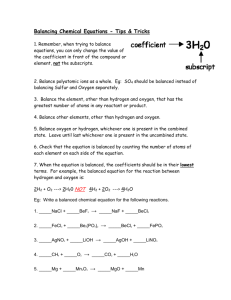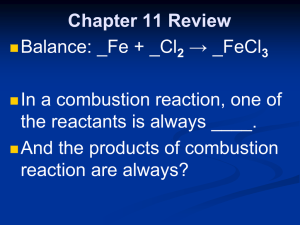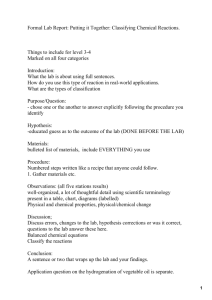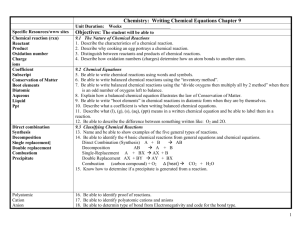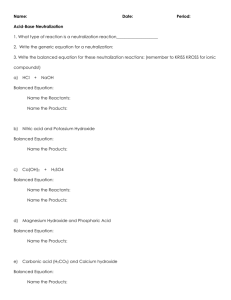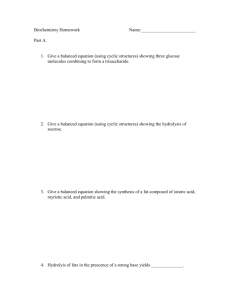AP Chemistry Equations—Answer Sheet Name:
advertisement
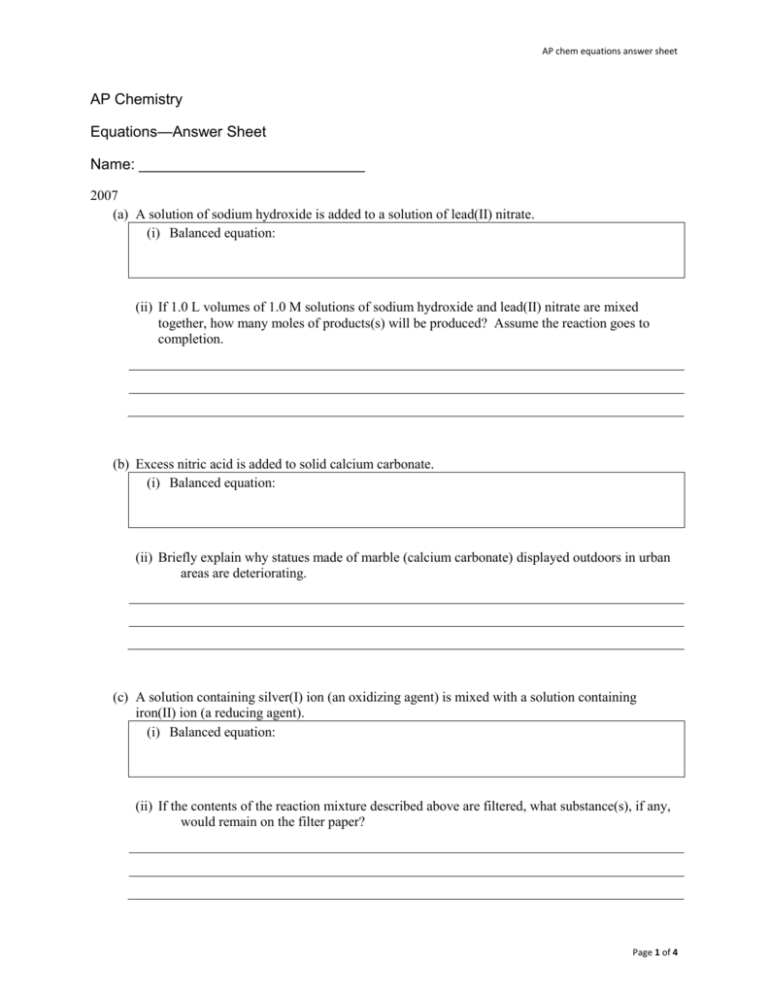
AP chem equations answer sheet AP Chemistry Equations—Answer Sheet Name: ___________________________ 2007 (a) A solution of sodium hydroxide is added to a solution of lead(II) nitrate. (i) Balanced equation: (ii) If 1.0 L volumes of 1.0 M solutions of sodium hydroxide and lead(II) nitrate are mixed together, how many moles of products(s) will be produced? Assume the reaction goes to completion. (b) Excess nitric acid is added to solid calcium carbonate. (i) Balanced equation: (ii) Briefly explain why statues made of marble (calcium carbonate) displayed outdoors in urban areas are deteriorating. (c) A solution containing silver(I) ion (an oxidizing agent) is mixed with a solution containing iron(II) ion (a reducing agent). (i) Balanced equation: (ii) If the contents of the reaction mixture described above are filtered, what substance(s), if any, would remain on the filter paper? Page 1 of 4 AP chem equations answer sheet 2008 (a) Aqueous sodium hydroxide is added to a saturated solution of aluminum hydroxide, forming a complex ion. (i) Balanced equation: (ii) If the resulting mixture is acidified, would the concentration of the complex ion increase, decrease, or remain the same? Explain. (b) Hydrogen chloride gas is oxidized by oxygen gas. (i) Balanced equation: (ii) If three moles of hydrogen chloride gas and three moles of oxygen gas react as completely as possible, which reactant, if any, is present in excess? Justify your answer. (c) Solid potassium oxide is added to water. (i) Balanced equation: (ii) If a few drops of phenolphthalein are added to the resulting solution, what would be observed? Explain. Page 2 of 4 AP chem equations answer sheet 2009 (a) A sample of solid iron(III) oxide is reduced completely with solid carbon. (i) Balanced equation: (ii) What is the oxidation number of carbon before the reaction, and what is the oxidation number of carbon after the reaction is complete? (b) Equal volumes of equimolar solutions of ammonia and hydrochloric acid are combined. (i) Balanced equation: (ii) Indicate whether the resulting solution is acidic, basic, or neutral. Explain. (c) Solid mercury(II) oxide decomposes as it is heated in an open test tube in a fume hood. (i) Balanced equation: (ii) After the reaction is complete, is the mass of the material in the test tube greater than, less than, or equal to the mass of the original sample? Explain. Page 3 of 4 AP chem equations answer sheet 2010 (a) A 0.2 M potassium hydroxide solution is titrated with a 0.1 M nitric acid solution. (i) Balanced equation: (ii) What would be observed if the solution were titrated well past the equivalence point using bromthymol blue as the indicator? (Bromthymol blue is yellow in acidic solution and blue in basic solution.) (b) Propane is burned completely in excess of oxygen gas. (i) Balanced equation: (ii) When the products of the reaction are bubbled through distilled water, is the resulting solution neutral, acidic, or basic? Explain. (c) A solution of hydrogen peroxide is heated, and a gas is produced. (i) Balanced equation: (ii) Identify the oxidation state of oxygen in hydrogen peroxide. Page 4 of 4
